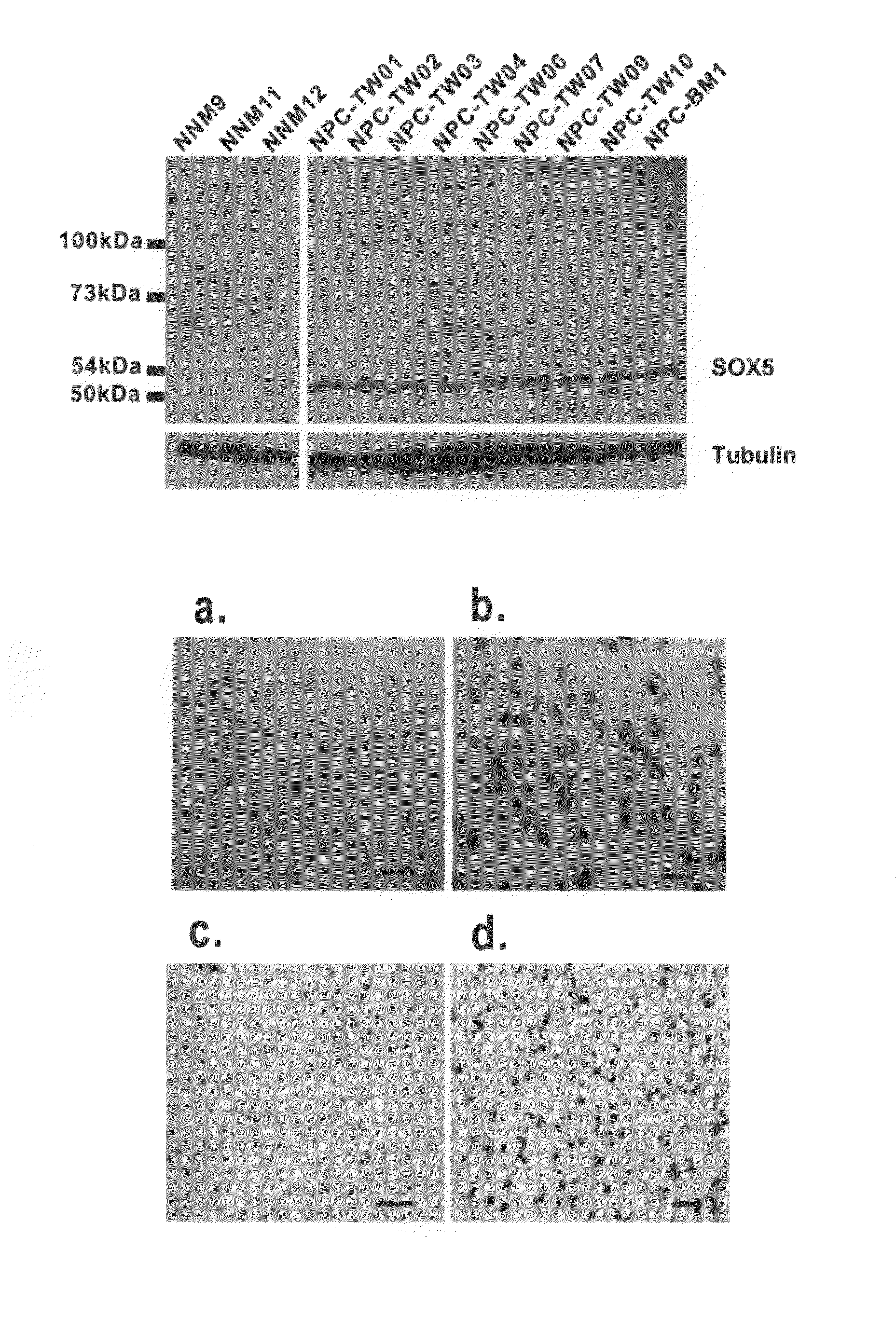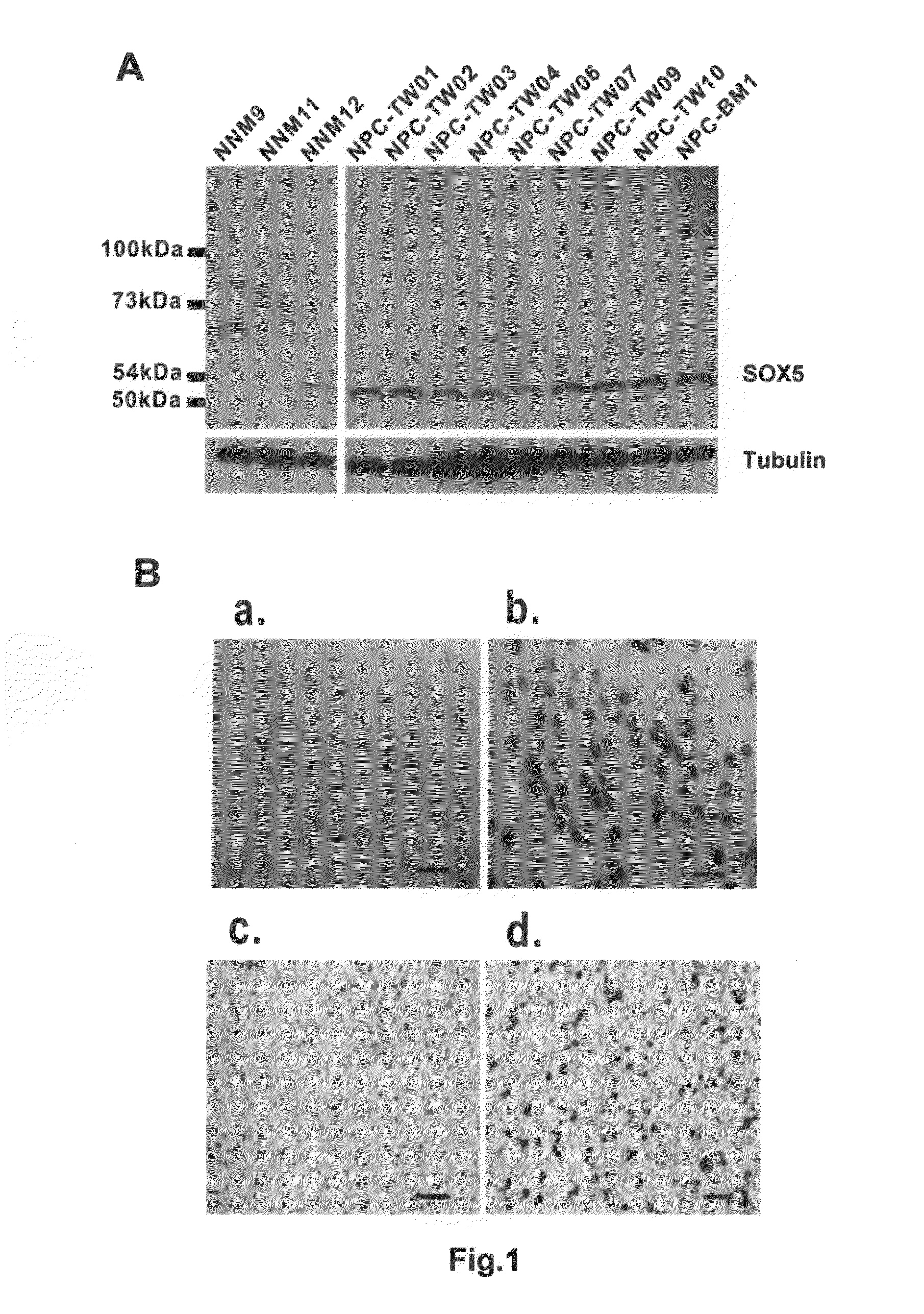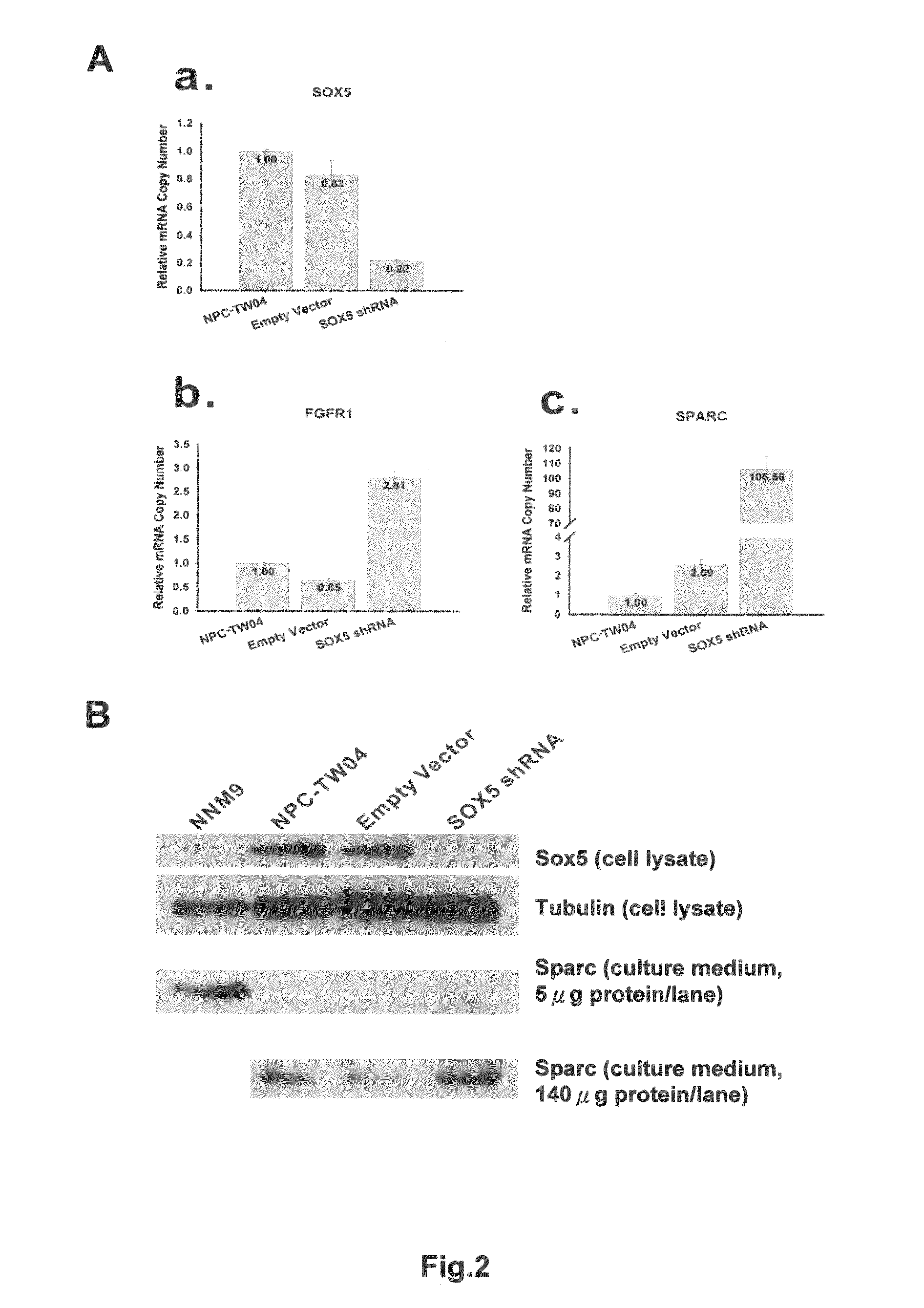Genetic markers and methods for detecting and treating cancers
a technology of genetic markers and cancer, applied in the field of genetic markers, can solve the problems of high chinese incidence, ineffective prediction and treatment of distant metastases of npc, and concentrated too much on epstein-barr virus found in npc tissues
- Summary
- Abstract
- Description
- Claims
- Application Information
AI Technical Summary
Problems solved by technology
Method used
Image
Examples
example 1
Comparison on Gene Expression Profile Changes of NPC Cells and Normal Nasomucosal Cells
[0033]Analysis of gene expression profiles from NPC cells or normal nasomucosal cells (NNM) using Microarray was carried out to identify the up-regulated and down-regulated gene sets. Primary cultures of normal nasomucosal cells NNM6, NNM9, NNM11 and NNM14 were obtained from 4 patients with nasal polyps undergoing polypectomy in National Taiwan University Hospital. After surgical removal, the nasal polyps specimens were immersed immediately in DMEM containing 10% fetal bovine serum (FBS) and maintained at 4° C. The tissue parts were cut, transferred to a Petri dish and cultivated in serum-free DMEM medium containing growth factors of insulin, transferin, selenium, bovine serum albumin, linoeic acid, hydrocortisone (1.25 μg / ml), cholera toxin (0.3 μg / ml), bovine pituitary extract (70 μg / ml), epidermal growth factor (25 μg / ml), endothelial cell growth supplement (0.1 μ / ml), 5-methyl-2′-deoxycytidine...
example 2
Correlation Between SOX5 Expression Level and Distant Metastasis / Prognosis
[0039]FGRF1 is a fibroblast growth factor receptor, while SPARC is a secreted protein acidic and rich in cysteine, which is a matricellular protein. The functions of both proteins showed no significant correlation. However, both genes were significantly inhibited in the abovementioned example 1. The study of the invention was to confirm whether both genes shared the same transcription factor / factors, or were regulated by the transcription factor / factors.
[0040]Transcriptional start sites (promoter regions) for both FGFR1 and SPARC gene sequences were searched using the Database of Transcriptional Start Sites, DBTSS, a public resource for the analysis of promoter regions. The bioinformatics information obtained was used to search for the transcription factors binding to both genes from the TRANSFAC database. Transcription factors Sox5, Nrf1 and tinman were found to be shared by both the FGFR1 and SPARC genes. Th...
example 3
The Effects of SOX5 Knocking-Down on NPC Cells
[0043]RNA interference (RNAi)-mediated knocking-down of transcription factor SOX5 gene was performed to determine if Sox5 could down-regulate FGFR1 and SPARC genes. The expression of both FGFR1 and SPARC genes were monitored after SOX5 gene was knocked down. Gene silencing by RNA interference inducing degradation of specific RNA using small interfering RNAs (siRNAs) or short hairpin RNAs (shRNAs) has become a valuable genetic tool. The SOX5 shRNA was cloned into a pSM2C vector. This SOX5 shRNA containing plasmid was transfected into NPC-TW04 cells with transfection AI reagents. A pSM2C vector containing no SOX5 shRNA or an unrelated shRNA served as a control. Q-RT-PCR analysis on the pSM2C-SOX5 -shRNA vectors transfected NPC-TW04 cells showed that the SOX5 gene was knocked-down by SOX5 shRNA. The mRNA of SOX5 was inhibited by SOX5 shRNA in comparison with the un-transfected NPC-TW04 cells (FIG. 2A-a). This model can be applied in studies...
PUM
| Property | Measurement | Unit |
|---|---|---|
| Time | aaaaa | aaaaa |
| Time | aaaaa | aaaaa |
| Time | aaaaa | aaaaa |
Abstract
Description
Claims
Application Information
 Login to View More
Login to View More - R&D
- Intellectual Property
- Life Sciences
- Materials
- Tech Scout
- Unparalleled Data Quality
- Higher Quality Content
- 60% Fewer Hallucinations
Browse by: Latest US Patents, China's latest patents, Technical Efficacy Thesaurus, Application Domain, Technology Topic, Popular Technical Reports.
© 2025 PatSnap. All rights reserved.Legal|Privacy policy|Modern Slavery Act Transparency Statement|Sitemap|About US| Contact US: help@patsnap.com



